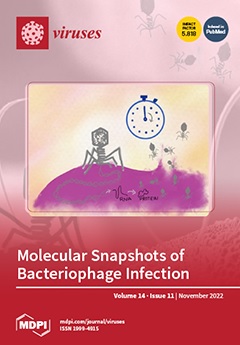Ver ítem
- xmlui.general.dspace_homeCentros e Institutos de InvestigaciónCIAP. Centro de Investigaciones AgropecuariasInstituto de Patología VegetalArtículos científicosxmlui.ArtifactBrowser.ItemViewer.trail
- Inicio
- Centros e Institutos de Investigación
- CIAP. Centro de Investigaciones Agropecuarias
- Instituto de Patología Vegetal
- Artículos científicos
- Ver ítem
A South American Mouse Morbillivirus Provides Insight into a Clade of Rodent-Borne Morbilliviruses
Resumen
Morbilliviruses are negative-sense single-stranded monosegmented RNA viruses in the family Paramyxoviridae (order Mononegavirales). Morbilliviruses infect diverse mammals including humans, dogs, cats, small ruminants, seals, and cetaceans, which serve as natural hosts. Here, I report the identification and characterization of novel viruses detected in public RNAseq datasets of South American long-haired and olive field mice. The divergent viruses dubbed
[ver mas...]
Morbilliviruses are negative-sense single-stranded monosegmented RNA viruses in the family Paramyxoviridae (order Mononegavirales). Morbilliviruses infect diverse mammals including humans, dogs, cats, small ruminants, seals, and cetaceans, which serve as natural hosts. Here, I report the identification and characterization of novel viruses detected in public RNAseq datasets of South American long-haired and olive field mice. The divergent viruses dubbed Ratón oliváceo morbillivirus (RoMV) detected in renal samples from mice collected from Chile and Argentina are characterized by an unusually large genome including long intergenic regions and the presence of an accessory protein between the F and H genes redounding in a genome architecture consisting in 3′-N-P/V/C-M-F-hp-H-L-5′. Structural and functional annotation, genetic distance, and evolutionary insights suggest that RoMV is a member of a novel species within genus Morbillivirus tentatively named as South American mouse morbillivirus. Phylogenetic analysis suggests that this mouse morbillivirus is closely related to and clusters into a monophyletic group of novel rodent-borne morbilliviruses. This subclade of divergent viruses expands the host range, redefines the genomic organization and provides insights on the evolutionary history of genus Morbillivirus.
[Cerrar]

Autor
Fuente
Viruses 14 (11) : 2403 (November 2022)
Fecha
2022-10-29
Editorial
MDPI
ISSN
1999-4915 (online)
Formato
pdf
Tipo de documento
artículo
Palabras Claves
Derechos de acceso
Abierto
 Excepto donde se diga explicitamente, este item se publica bajo la siguiente descripción: Creative Commons Attribution-NonCommercial-ShareAlike 2.5 Unported (CC BY-NC-SA 2.5)
Excepto donde se diga explicitamente, este item se publica bajo la siguiente descripción: Creative Commons Attribution-NonCommercial-ShareAlike 2.5 Unported (CC BY-NC-SA 2.5)


